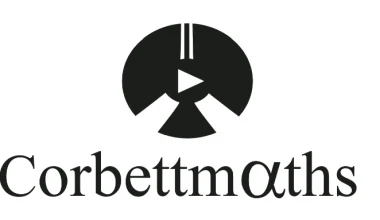Appointment setting is an important aspect of any business that wants to expand its reach and increase its customer base.
It involves scheduling meetings between a business representative and a potential customer.
This article will discuss everything you need about appointment setting, including frequently asked questions.
Table of contents
- What is Appointment Setting, and Why is it Important?
- What are the Different Types of Appointment Settings?
- How does Appointment Setting Work?
- What are the Benefits of Appointment Setting?
- How Can Businesses Improve their Appointment Setting Process?
- What are the Common Mistakes Businesses Make During the Appointment Setting Process?
- What is the Role of a Sales Representative in the Appointment Setting Process?
- What are Some Best Practices for Appointment Setting?
- What are Some Common Appointment Setting Tools?
- FAQs
- Conclusion
- References
- Recommendations
What is Appointment Setting, and Why is it Important?
Appointment setting is a sales technique that involves scheduling a meeting between a sales representative and a potential customer. The main objective of appointment setting is to convert leads into customers. It is essential to the sales process because it allows businesses to connect with customers and effectively promote their products or services.
Appointment setting is important because it allows businesses to communicate their value proposition directly to potential customers. It will enable businesses to present their products or services to potential customers in a personalized manner. This personalized approach helps to build trust and credibility with potential customers, which is crucial for converting them into customers.
In today’s competitive business environment, appointment setting has become even more critical. With so many businesses vying for customers’ attention, standing out from the competition is essential. Appointment setting allows businesses to do just that by providing a personalized approach that focuses on the individual needs and preferences of potential customers.
Appointment setting is also important because it helps businesses to save time and resources. Instead of wasting time and resources on unqualified leads, appointment setting allows businesses to focus on high-quality leads more likely to convert into customers. This targeted approach helps businesses to achieve better results with fewer resources.
Furthermore, appointment setting helps businesses to improve their customer engagement and retention. Businesses can better understand their needs and preferences by connecting with potential customers. This understanding helps businesses to provide better products or services that meet the needs of their customers. This, in turn, leads to better customer engagement and retention, which are essential for long-term business success.
See Also: What is RTI in education? (Full Explanation With FAQs)
What are the Different Types of Appointment Settings?
There are different appointment settings, each with a unique approach and benefits. Here are some of the most common types:
#1. Cold Calling
This involves reaching out to potential customers without interest in the business or its products or services. Cold calling is usually done over the phone, and the sales representative aims to generate interest in the product or service and schedule an appointment.
#2. Warm Calling
Warm calling involves reaching out to potential customers who have already shown some interest in the business or its products or services. For example, they may have filled out a form on the company’s website or attended an event sponsored by the company.
#3. Email Appointment Setting
This involves sending personalized emails to potential customers to schedule an appointment. Email appointment setting is cost-effective and can be automated to save time.
#4. In-Person Appointment Setting
This involves setting up face-to-face meetings with potential customers. In-person appointment setting is usually reserved for high-value prospects who require a more personalized approach.
#5. Web-based Appointment Setting
This involves using web-based tools, such as online calendars or scheduling software, to schedule appointments. This method is often used by businesses that offer online services or products.
Each type of appointment setting has its advantages and disadvantages. For example, cold calling can effectively generate leads but can also be time-consuming and may result in rejection. Warm calling, on the other hand, may result in higher conversion rates, but it requires a more personalized approach.
Email appointment setting is a cost-effective option, but other methods of generating interest may be less effective. In-person appointment setting is highly personalized but may require more time and resources. Web-based appointment setting is convenient and efficient, but it may be less effective in establishing a personal connection with potential customers.
See Also: What Is Computer-Assisted Learning? 2023 Explanations with FAQs
How does Appointment Setting Work?
Appointment setting is a process that involves scheduling a meeting between a sales representative and a potential customer. The process typically starts with identifying leads, which can be done through various means, including advertising, social media, and email marketing. Once leads are identified, the next step is to qualify them to determine if they are a good fit for the business.
Businesses typically use various criteria to qualify leads, such as demographics, geographic location, and interests. Once qualified, a sales representative contacts the lead, who presents the business’s value proposition and seeks to schedule a meeting.
The meeting can be scheduled through various means, including phone, email, or online scheduling tools. The sales representative will typically work with the potential customer to find a time and date that works for both parties. Once the meeting is scheduled, the sales representative will typically send a confirmation email or message to ensure that both parties are on the same page.
During the meeting, the sales representative will typically present the business’s products or services and seek to address any questions or concerns that the potential customer may have. The objective of the meeting is to establish a connection with the potential customer and build trust and credibility. If successful, the potential customer may be converted into a paying customer.
Appointment setting is crucial to the sales process because it provides a targeted approach focusing on high-quality leads. By qualifying leads and scheduling meetings, businesses can focus on potential customers more likely to convert. This targeted approach helps businesses to save time and resources while achieving better results.
See Also: What is Civil Engineering Project Management in 2023? All you need to know.
What are the Benefits of Appointment Setting?
There are several benefits of appointment setting for businesses, which extend to the sales team and the overall organization. Here are some of the benefits of appointment setting:
#1. Increased Sales
One of the main benefits of appointment setting is that it can help to increase sales. By focusing on qualified leads and scheduling meetings, businesses can build relationships with potential customers and convert them into paying customers.
#2. Better Time Management
Appointment setting helps businesses to manage their time more effectively. By focusing on high-quality leads, sales representatives can avoid wasting time on unqualified leads and focus on converting potential customers more likely to convert.
#3. Improved Efficiency
Appointment setting can improve the efficiency of the sales process. By using a targeted approach, businesses can focus their efforts on potential customers who are more likely to convert, which can help to increase efficiency and reduce wasted resources.
#4. Increased Revenue
By converting more leads into paying customers, appointment setting can help increase business revenue. This increased revenue can help businesses to grow and expand their operations.
#5. Improved Customer Relationships
Appointment setting can improve customer relationships by providing a personalized approach to sales. Businesses can establish trust and credibility with potential customers by scheduling a meeting and addressing the customer’s needs.
#6. Better Data
Appointment setting can help businesses to collect better data about their customers. By qualifying leads and scheduling meetings, businesses can gain valuable insights into customer needs and preferences, informing future sales and marketing efforts.
See Also: What is a Forensic Investigation in 2023? Courses, Certifications
How Can Businesses Improve their Appointment Setting Process?
Improving the appointment setting process is critical for businesses that want to maximize their sales efforts and generate more revenue. Here are some ways businesses can improve their appointment setting process:
#1. Define Target Audience
The first step in improving the appointment setting process is to define the target audience. By identifying the ideal customer profile and understanding their needs and preferences, businesses can create a more targeted approach to appointment setting.
#2. Develop a Script
Developing a script for the appointment setting process helps ensure the sales representative stays on message and provides consistent information to potential customers. The script should include key talking points and questions to ask potential customers.
#3. Train Sales Representatives
Training sales representatives in the appointment setting can improve their skills and effectiveness. The training should cover key aspects of the appointment setting process, including how to qualify leads and handle objections.
#4. Use Technology
Technology can improve the appointment setting process. Businesses can use customer relationship management (CRM) software to track customer interactions, automate follow-up processes, and manage schedules.
#5. Provide Incentives
Providing incentives for sales representatives can help to improve the appointment setting process. Incentives could include bonuses for successful appointments, commissions on sales generated from appointments, or recognition for high-performing sales representatives.
#6. Measure Success
Measuring the success of the appointment setting process is critical for improving it over time. Businesses should track key metrics such as the number of appointments scheduled, conversion rates, and revenue generated from appointments.
See Also: How Can I Become An Executive Assistant In 2023?
What are the Common Mistakes Businesses Make During the Appointment Setting Process?
Regarding appointment setting, businesses can make several common mistakes during the process. Some of these mistakes can cause frustration for the business and the potential customer, ultimately resulting in lost sales or a damaged reputation.
Below are some of the most common mistakes to avoid when setting appointments:
#1. Not Properly Qualifying Leads
One of the businesses’ biggest mistakes is not properly qualifying leads before setting appointments. This can lead to wasted time and resources, as well as missed opportunities with more qualified prospects. It’s important to take the time to understand the needs and preferences of potential customers before scheduling an appointment.
#2. Poor Communication
Clear and effective communication is key when setting appointments. Businesses that need to communicate important details, such as the purpose of the appointment, the date and time, and any necessary preparation or documentation, can leave potential customers feeling confused and frustrated.
#3. Overbooking
While it’s important to make the most of every opportunity, overbooking can lead to rushed and ineffective appointments. This can cause potential customers to feel undervalued and result in missed opportunities.
#4. Lack of Flexibility
Businesses unwilling to be flexible with scheduling can miss out on potential customers who have busy schedules or require specific accommodations. Being willing to work with customers to find a mutually convenient time can go a long way in building a positive reputation and securing sales.
#5. Not Following Up
Following up after an appointment is an important step in the sales process. Businesses that fail to follow up with potential customers can take advantage of opportunities to address any concerns or questions that may have arisen during the appointment and ultimately close the sale.
See Also: What is Purchasing and Supply Management in 2023?
What is the Role of a Sales Representative in the Appointment Setting Process?
Appointment setting is crucial for businesses that rely on sales representatives to close deals. In this process, sales representatives play a vital role in securing appointments with potential clients. A sales representative’s role is essential in ensuring the appointment setting process is successful.
Sales representatives are responsible for identifying potential clients who might be interested in the products or services offered by the company. They must be skilled in identifying the right prospects and reaching out to them effectively. Sales representatives must also be knowledgeable about the product or service they are selling to provide accurate information to potential clients.
Once a potential client has been identified, the sales representative must make initial contact to determine the client’s interest in the product or service. This initial contact can be in the form of a phone call, email, or any other means of communication that the client prefers. The sales representative must be prepared to answer any client’s questions and provide them with all the necessary information about the product or service.
If the potential client is interested, the sales representative must schedule an appointment. They must be skilled in negotiating with the client to find a convenient time for both parties. The sales representative must also ensure that the client has all the necessary information for the appointment, such as the location and agenda.
See Also: What is credit recovery in high school? (Strategies with FAQs)
What are Some Best Practices for Appointment Setting?
Appointment setting is a crucial aspect of any business that relies on sales. With appointments, getting customers to commit to buying your product or service can be easy.
Therefore, businesses need to have a solid appointment setting process in place. In this section, we will explore some best practices for appointment setting.
#1. Research and Know Your Target Audience
Before setting appointments, it is essential to understand who your target audience is. Knowing your target audience will help you craft an effective sales pitch and maximize your time.
#2. Personalize Your Approach
When reaching out to potential customers, make sure your approach is personalized. Use their name, mention their specific needs, and offer solutions tailored to their unique situation.
#3. Keep Your Communication Clear and Concise
Communication is key in appointment setting. Ensure your message is clear and concise, avoiding unnecessary jargon or technical terms. Also, ask questions and listen to the customer’s responses.
#4. Follow Up
Following up with potential customers is crucial. It shows that you are interested in their business and willing to work with them. Be sure to send a follow-up email or make a follow-up call after your initial communication.
#5. Use Appointment Setting Software
Appointment setting software can streamline the process and make it easier to manage. It allows you to schedule appointments, track leads, and monitor progress.
#6. Use Multiple Channels
Don’t rely on just one channel to reach potential customers. Use email, phone, and social media to ensure you reach them where they are most comfortable.
#7. Be Professional
Always maintain a professional demeanor when reaching out to potential customers. This includes being punctual, dressing appropriately, and speaking politely and respectfully.
#8. Set Clear Expectations
When setting appointments, make sure you set clear expectations with the customer. Let them know what to expect, how long the meeting will last, and the next steps.
#9. Train Your Sales Representatives
Your sales representatives play a crucial role in the appointment setting process. Be sure to provide them with the necessary training and resources to be successful.
#10. Measure Your Results
Finally, measuring your results and making adjustments where necessary is essential. Keep track of your success rates and analyze where you can improve your process.
See Also: What is A Passing Grade in Middle School? Explained
What are Some Common Appointment Setting Tools?
When it comes to appointment setting, businesses can use various tools to help streamline the process and improve their success rates. Here are some common appointment setting tools that can be used:
#1. Customer Relationship Management (CRM) Software
A CRM is a tool used to manage interactions with customers and prospects. It can store customer data, track communication history, and help with lead management, making it a great tool for appointment setting.
#2. Email Marketing Platforms
Email marketing platforms allow businesses to send personalized emails to potential clients, which can be used to request appointments. These platforms can also track email opens and clicks, making it easier to follow up with prospects.
#3. Online Scheduling Software
Online scheduling software allows customers to book appointments online, eliminating the need for phone tag or email exchanges. This can save time and improve the customer experience.
#4. Call Recording Software
Call recording software can record calls between sales representatives and prospects. This can be helpful for training purposes and can also serve as a record of the conversation.
#5. Automated Dialing Software
Automated dialing software can dial multiple phone numbers at once, saving time and allowing sales representatives to connect with more prospects.
#6. Lead Generation Tools
Lead generation tools can be used to find potential customers that fit a business’s ideal customer profile. These tools can help businesses identify prospects and streamline their appointment setting process.
Social media platforms like LinkedIn can be used to connect with potential customers and schedule appointments. LinkedIn, in particular, is a great tool for appointment setting as it is a professional platform designed for networking and business connections.
See Also: What is Rote Learning? Full Explanations with FAQs
FAQs
Appointment setting involves scheduling a meeting or appointment with a potential customer, while lead generation involves finding potential customers who may be interested in your product or service.
Three to four attempts are considered appropriate before moving on to another prospect.
The best time to make an appointment setting call is usually between 8:00 a.m. and 10:00 a.m. or late afternoon between 4:00 p.m. and 5:00 p.m.
Conclusion
Appointment setting is an essential part of the sales process that allows businesses to establish a connection with their customers and promote their products or services more effectively.
By following the best practices and using the right tools, businesses can improve their appointment setting process and achieve better results.
References
- Funnel.io – Everything you need to know about Appointment Setting
- Outboundview.com – Appointment setting FAQ



